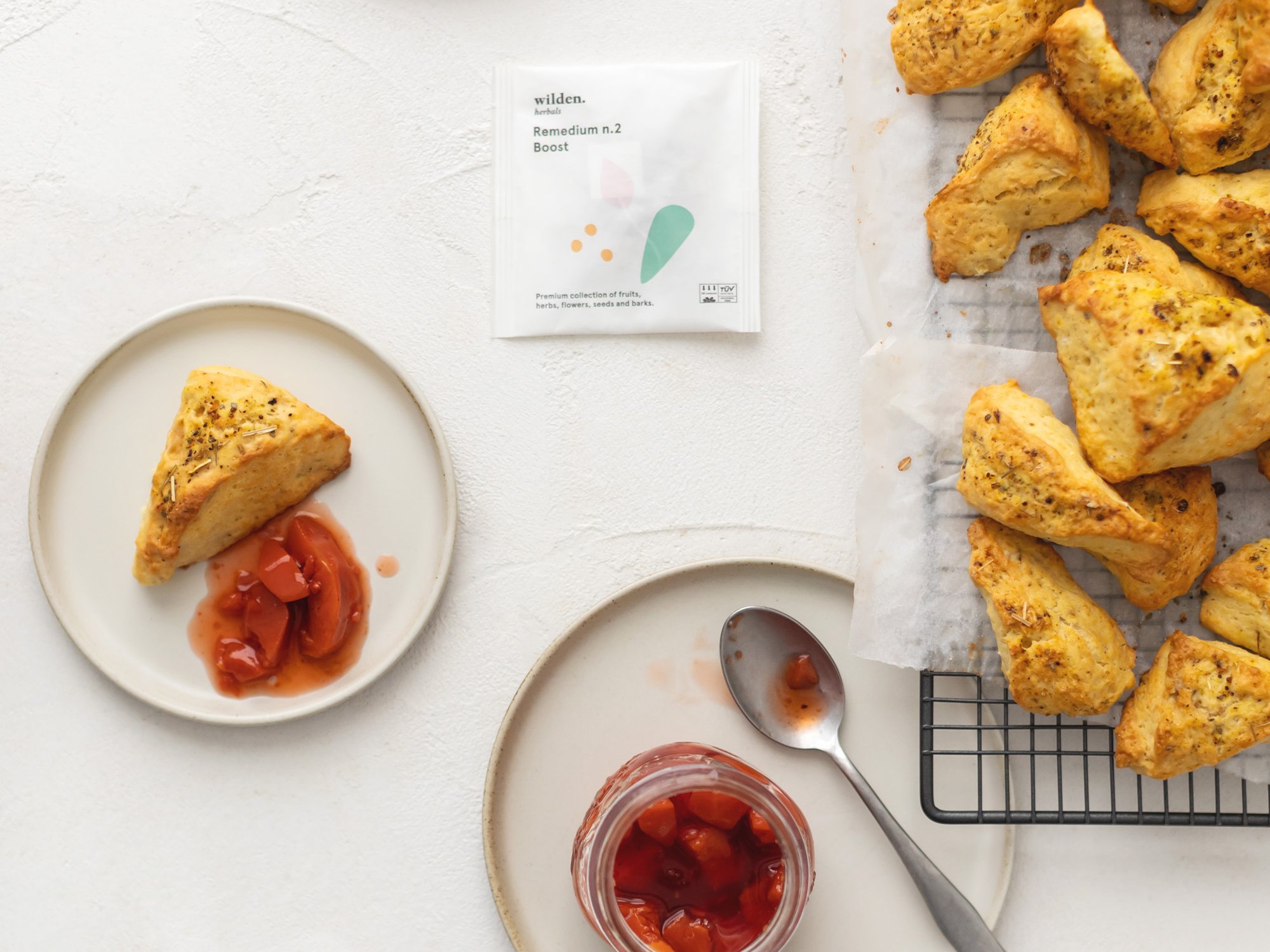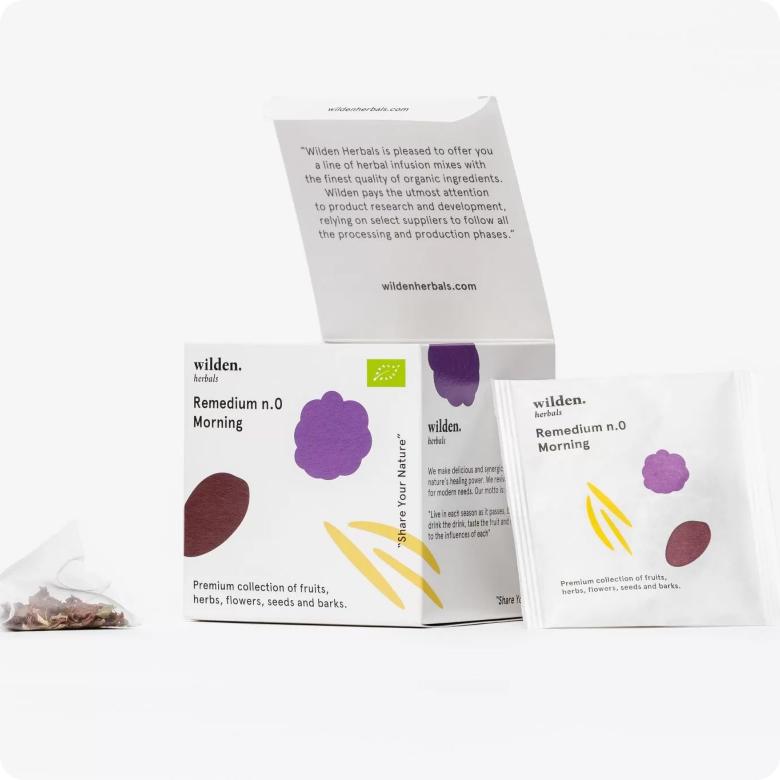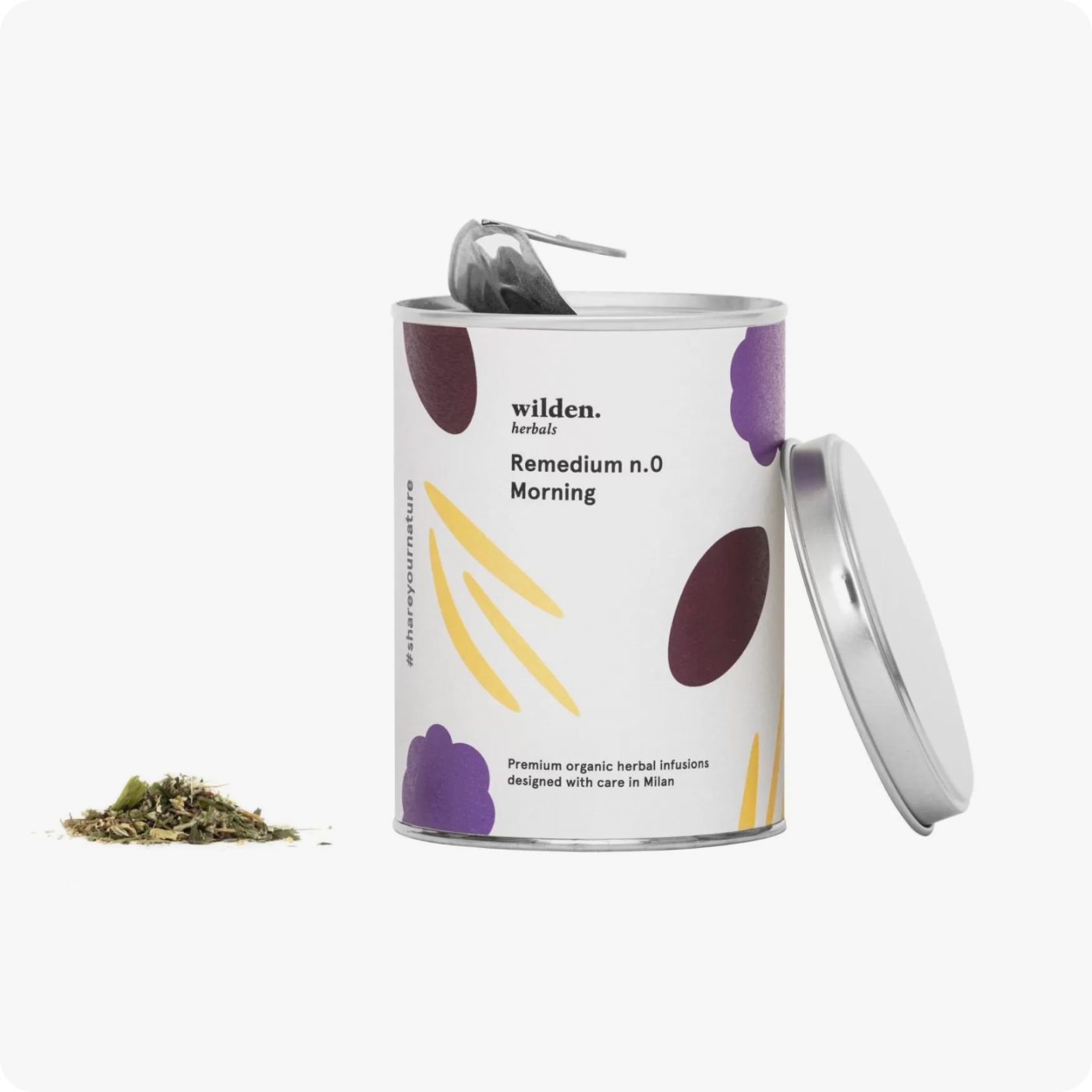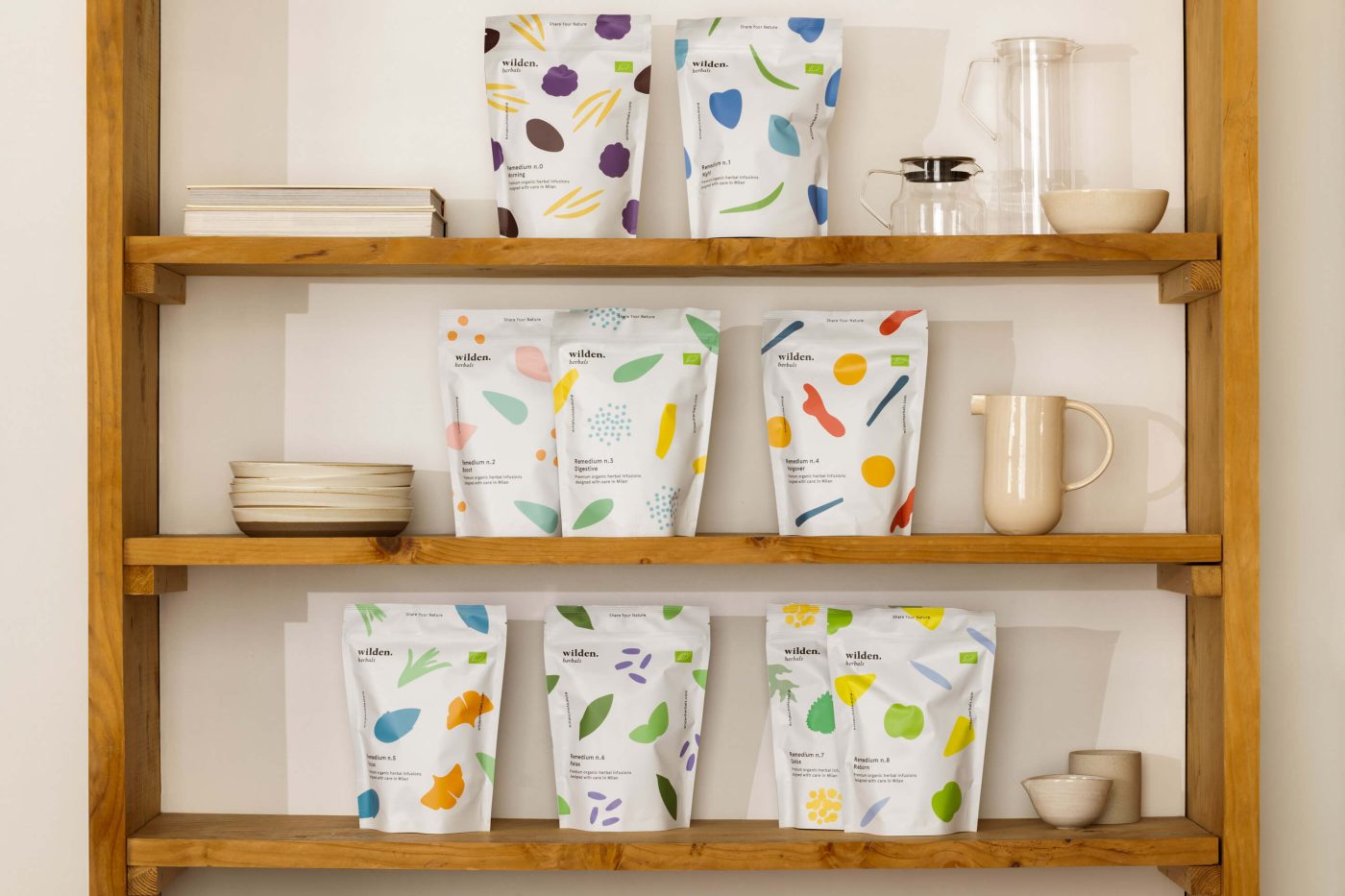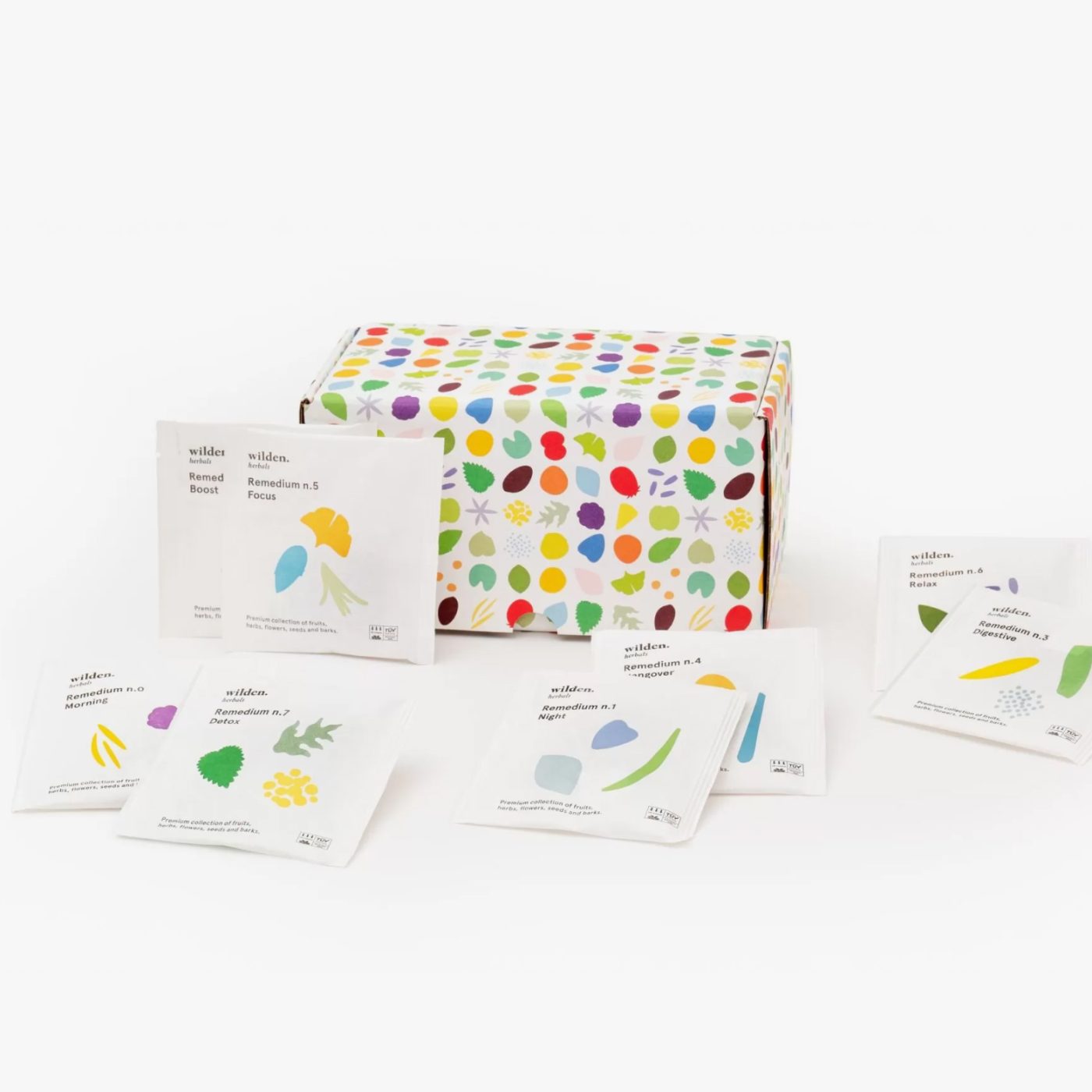History of cocoa from tree to cup
History, benefits and properties of an ingredient we have been in love with since our first recipe
- Botanical anatomy
- Origin and habitat
- Seed processing
- Curiosities
- Caco and Wilden: a relationship that never tires us
- Christmas Box: our combos dedicated to combining herbal tea and cocoa
- Bibliography
Cacao: botanical anatomy
The cocoa plant, whose scientific name, Theobroma cacao, comes from classical Greek and means“Food of the Gods,” is an evergreen species belonging to the Sterculiaceae or Malvaceae family.
It grows as a small tree, reaching a maximum height of about 5-6 m, with oval-shaped leaves with a reddish hue. The flowers of the cacao tree are very numerous and clustered in clusters that bloom from the scar left when the leaves fall and sometimes even on the main trunk-a rather rare phenomenon that seems to have developed to support its heavy fruits. The flowers are characterized by a pink calyx and five petals, with a very narrow conformation that makes pollination very difficult, so much so that there are few varieties of midges small enough to succeed in this task.
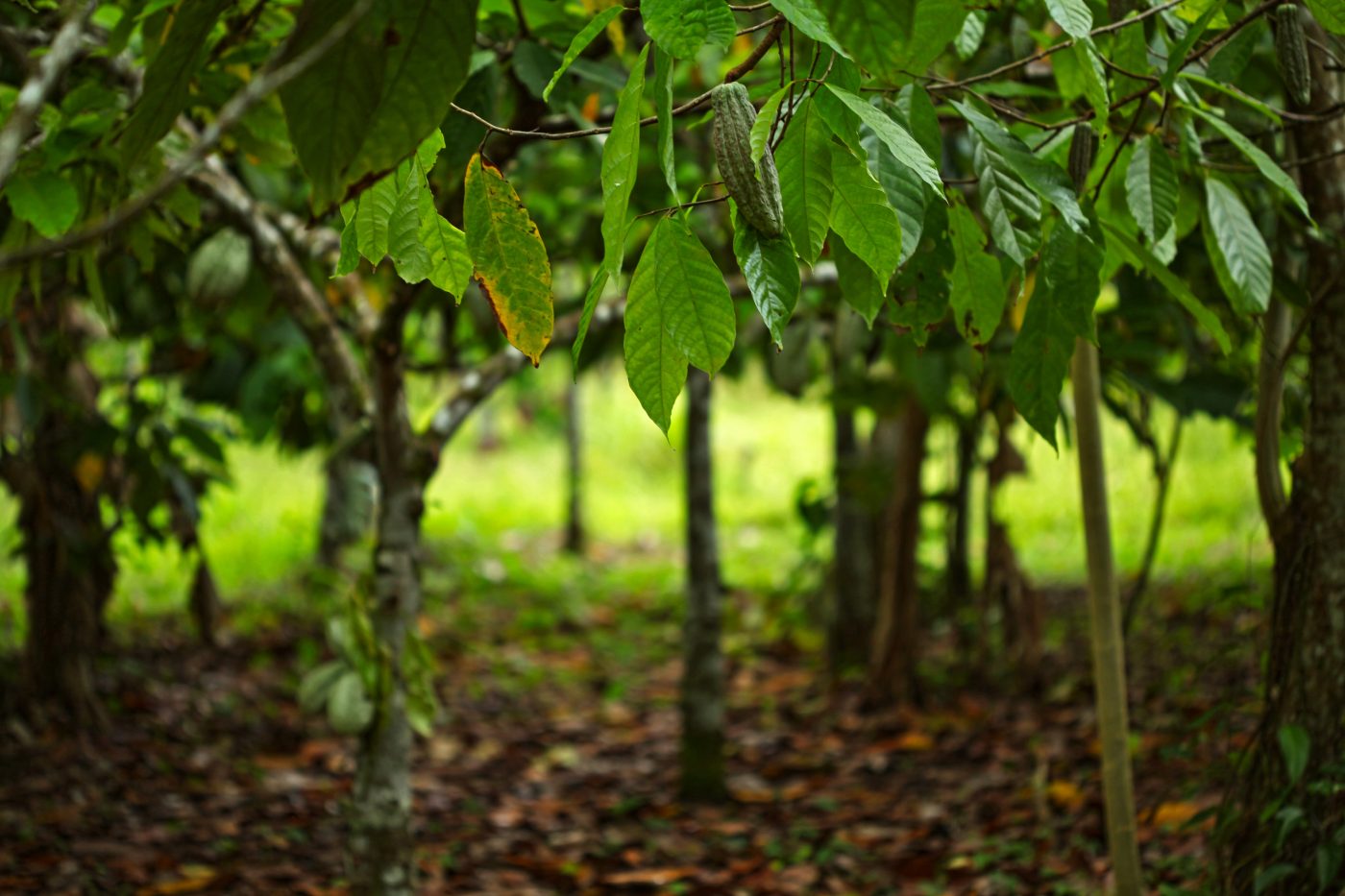
Cacao: origin and habitat
The cocoa plant is native to the upper Amazon basin region that includes Brazil, Colombia and Peru. The ideal climate for its growth is the humid heat of tropical areas. It does not tolerate temperature changes or direct light; in fact, it often grows under the shelter of other larger trees, such as palms or banana trees.
As is the case with wine production, terroir is important for cocoa beans, meaning that different flavors and flavor nuances can be noted depending on where the plant is grown.
Cacao: the processing of the beans
The cocoa tree gives flowers, fruits and leaves all year round from 2-3 years of age. Its fruits are called cabosse and are melon-like with an elongated shape and a wrinkled shell. When ripe they are harvested and opened to extract the valuable cocoa beans, more commonly called fava beans. Each fruit contains 25 to 75 of them. Together with the pulp that surrounds them, they are left to ferment for 5 days, covered by banana leaves.
Fermentation is then interrupted by drying, leaving the beans in the sun for 2 to 3 weeks. Next comes roasting, bringing the beans to temperatures between 120 and 180 degrees for a time that never exceeds 30 minutes, so as not to lose the more delicate notes. Finally, the beans are ground and go through other processing depending on whether you want to obtain powder, butter or the actual chocolate.
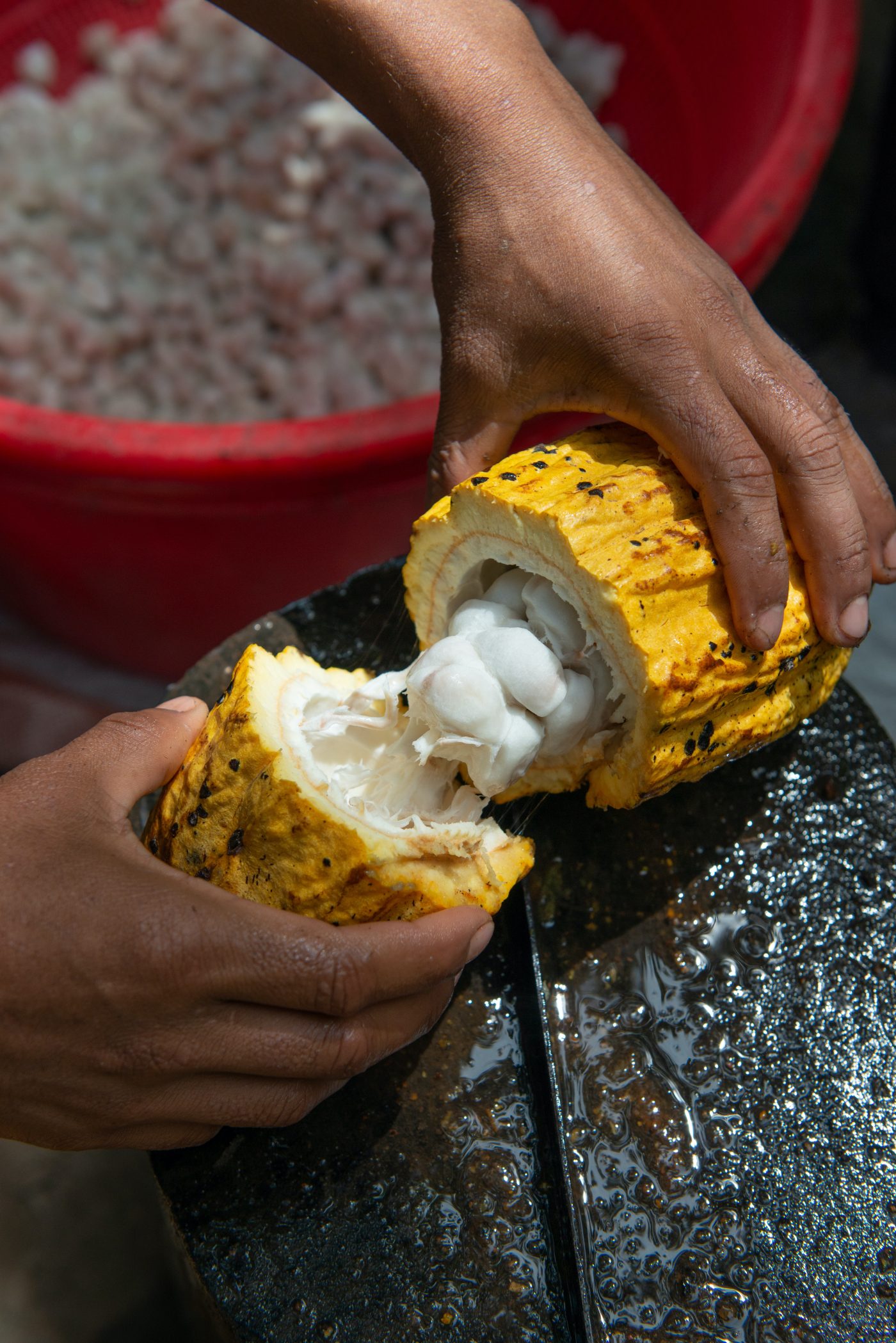
Cacao: curiosities
- For the Aztec people,“chocolate” was considered a delicacy reserved only for the upper echelons of society and was even used as a bargaining chip. We put the word in quotes because the “chocolate” consumed at that time must have been very different than what we understand today. It seems that it was mainly used in the form of an infusion in hot water, combining pulp, seeds and other spices such as pepper and chili. This drink also had ceremonial and religious value because cocoa was associated with the Goddess of Fertility.
- It is said that the first European to taste this drink was Christopher Columbus, but he did not particularly appreciate it, believing its taste to be excessively spicy and peculiar. In fact, as an ingredient it did not catch on immediately in the Old World and was initially used as a spice to mix into game or fish dishes.
Caco and Wilden: a relationship that never tires us
Noi di Wilden abbiamo un’intesa con il cacao che portiamo avanti fin dalla nostra origine. Non a caso, infatti, lo si trova nel nostro primogenito, il Remedia n. 0 – Morning. È un ingrediente che abbiamo scelto per le sue proprietà toniche ed energizzanti e perché è un prezioso alleato di cuore e cervello, grazie alla presenza di vitamina B e alla sua capacità di stimolare serotonina e dopamina per un’azione antidepressiva.
Il cacao, inoltre, è presente anche in diversi prodotti della nostra dispensa online. Non solo quelli di pasticceria firmati Mamù, il laboratorio del Monferrato a conduzione familiare che ha dato vita alla ricetta dei Frollini Morning a partire proprio dal nostro infuso e ai Baci di Alessandria Parla Nèn. Ma anche nella crema spalmabile di nocciole NUTurally dei Fratelli Durando, un prodotto completamente naturale nato da tre semplici ingredienti in purezza (60% nocciole del Piemonte IGP, 30% zucchero, 10% cacao amaro).
E per finire in bellezza, una new entry del nostro eshop: la tavoletta di Cacao Disidente, un cioccolato fondente 70% di altissima qualità nato da materie prime coltivate in Colombia.
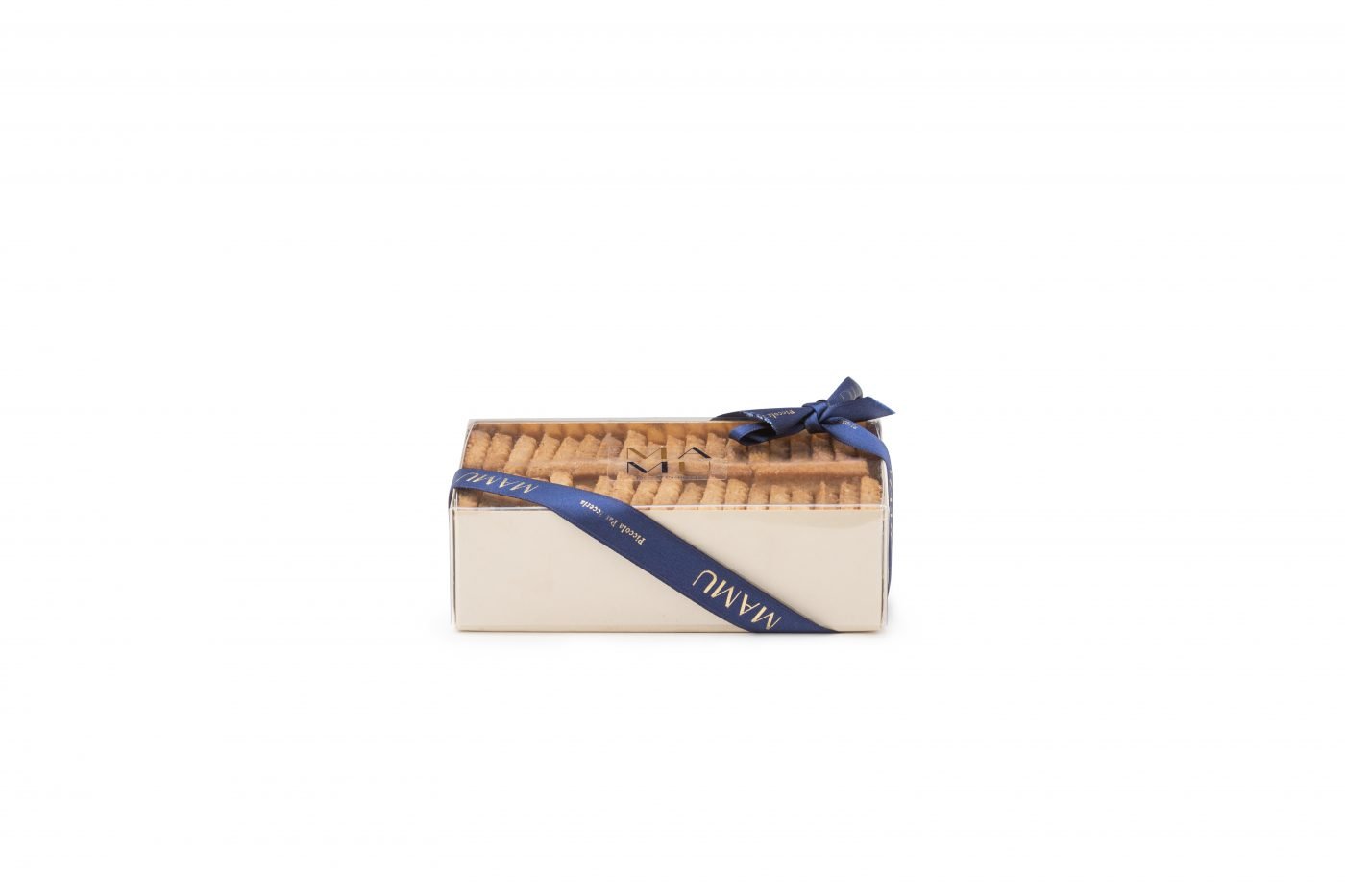

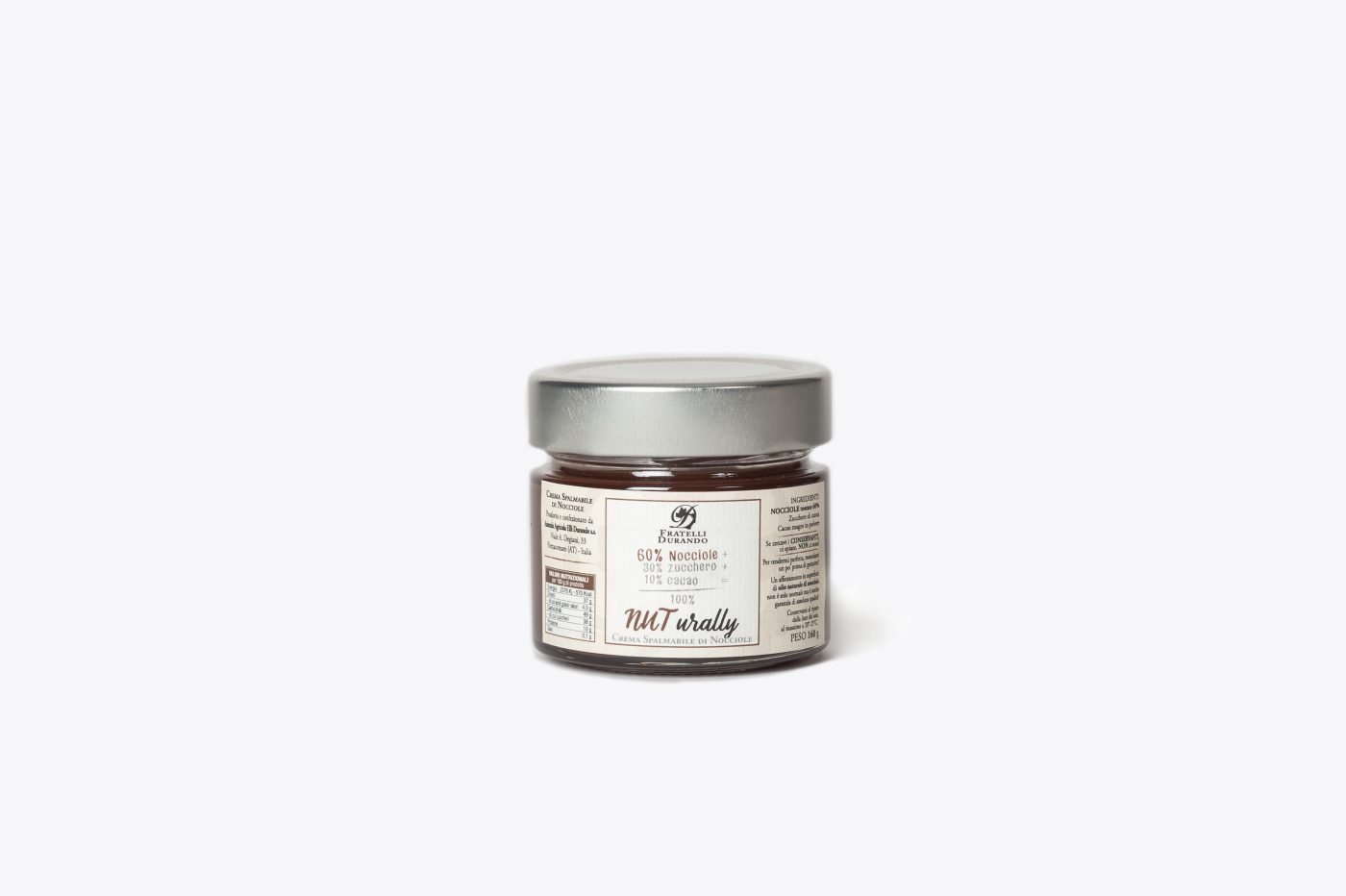
Christmas Box: our combos dedicated to combining herbal tea and cocoa
If you are looking for just the right gift for someone who loves chocolate, there are some Christmas Boxes that might be just right for you.
- Ovviamente partiamo dalla Breakfast – Gift Box. In tutte le sue misure trovi la combo perfetta: la nostra tisana Remedium n. 0 – Morning + i Frollini Morning.
- Poi c’è la Mix’n Sweet – Gift Box. Qui non poteva proprio mancare qualcosa per i più golosi, ovvero la cioccolata fondente di Caco Disidente.
- E, infine, la Night – Gift Box. Perché per chiudere una lunga giornata non c’è niente di meglio che concedersi una dolce coccola con i Baci di Alessandria, Parla Nèn.
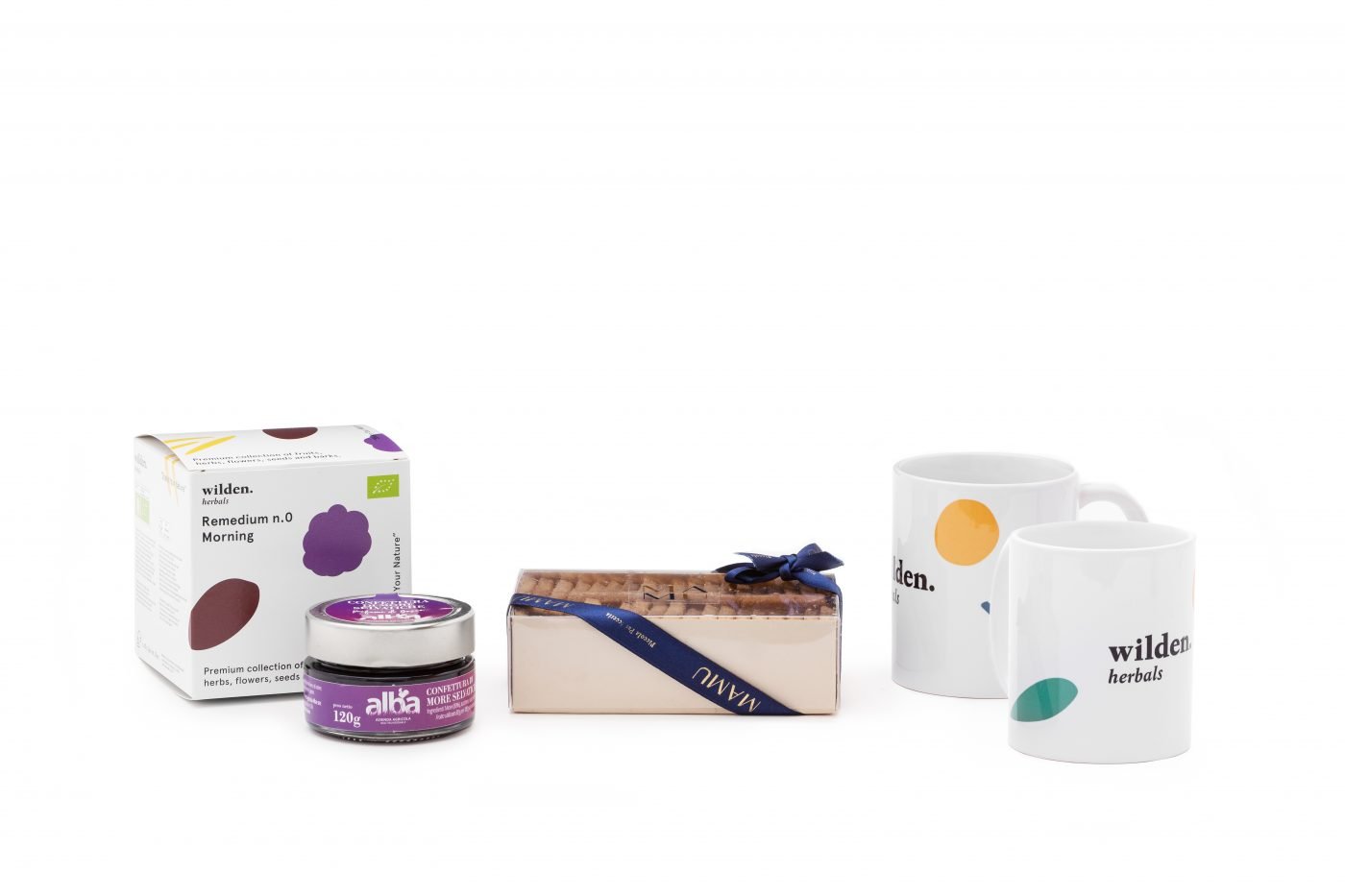
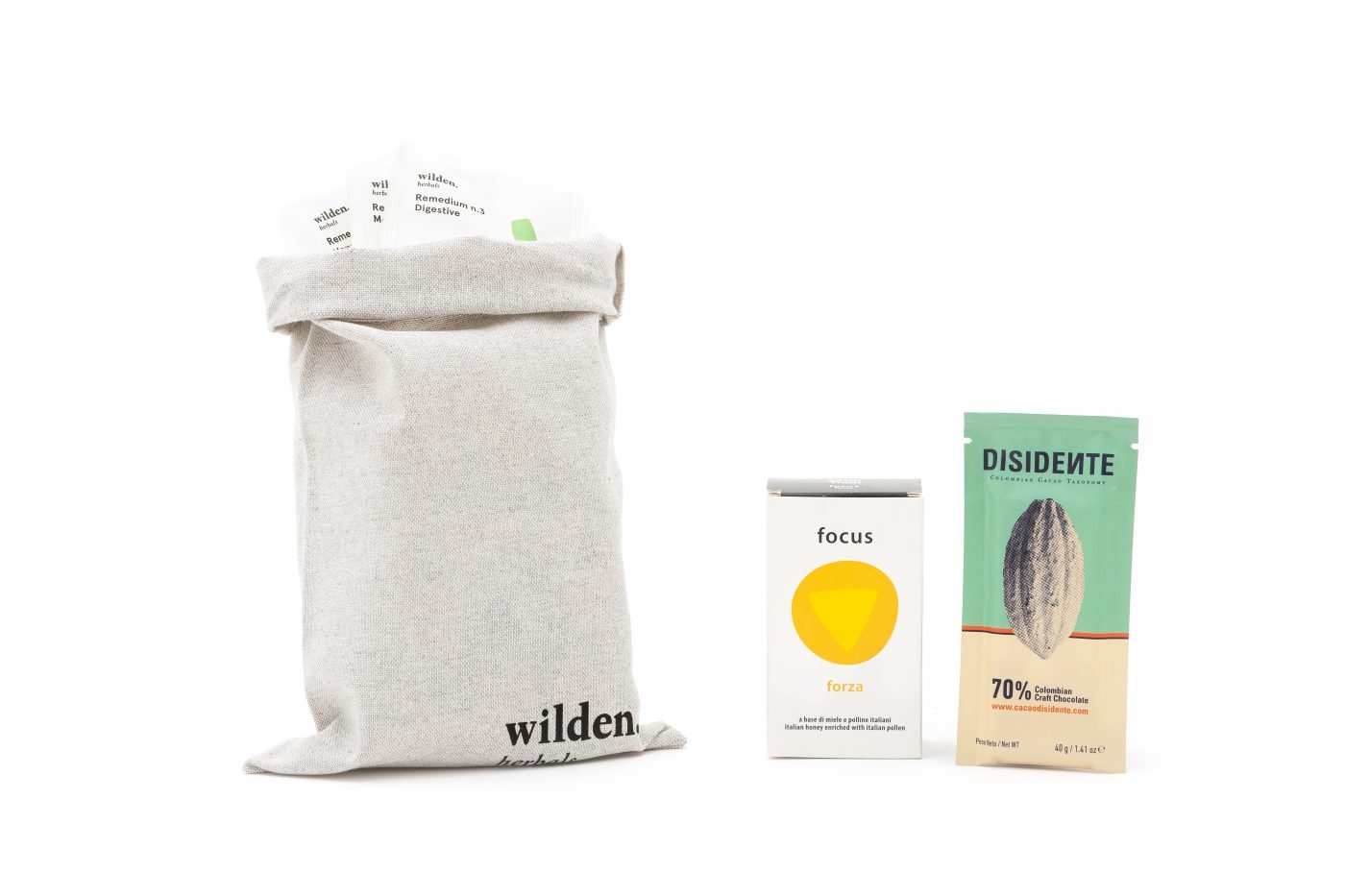
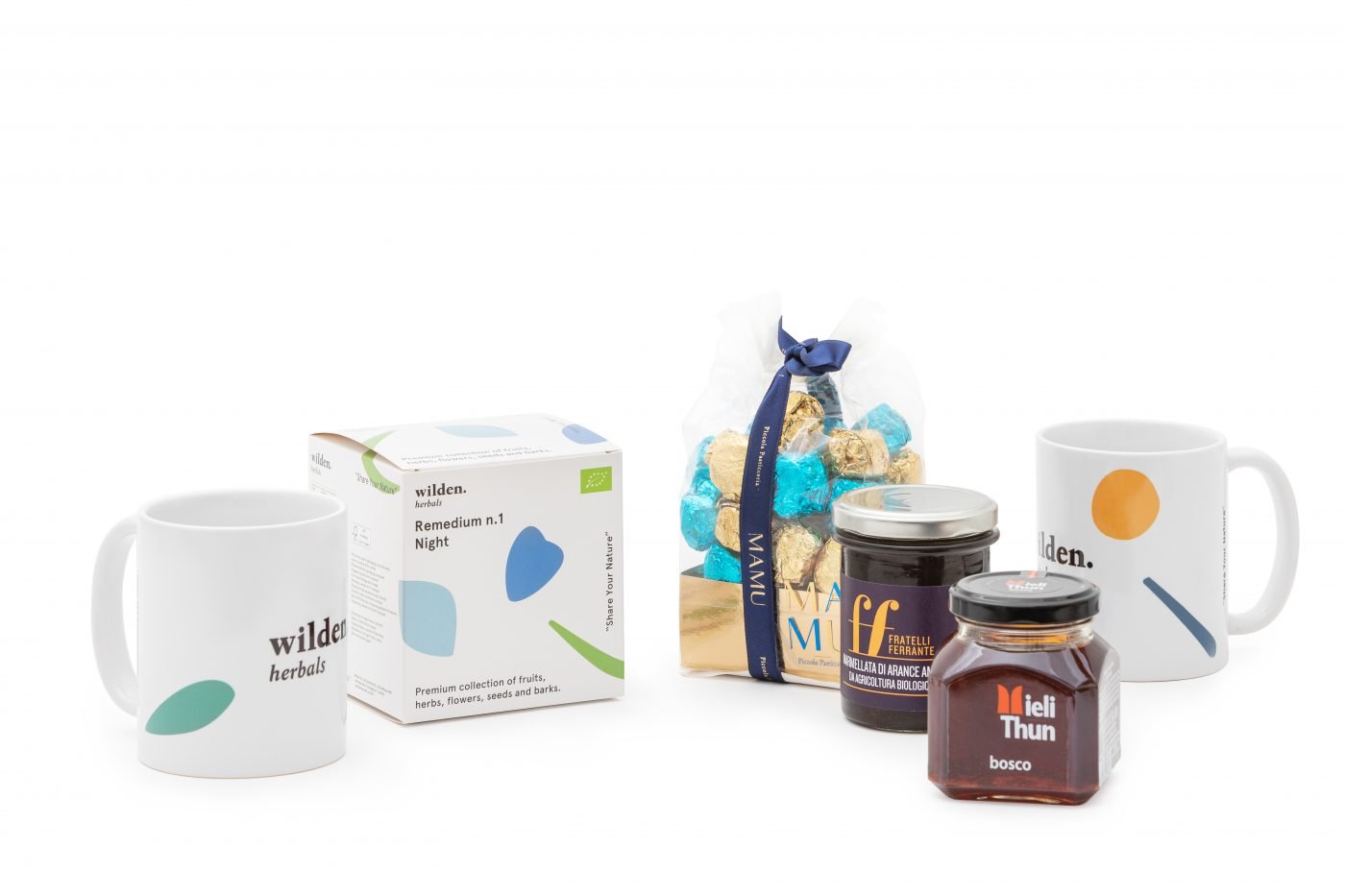
Bibliography
- The botany of desire. The world as seen by plants, M. Pollan. The Assayer, 2014
- Plants that change the mind, M. Pollan. Adelphi, 2022

